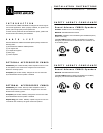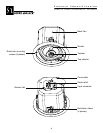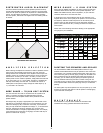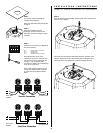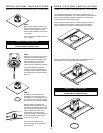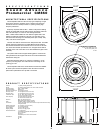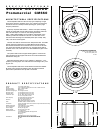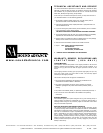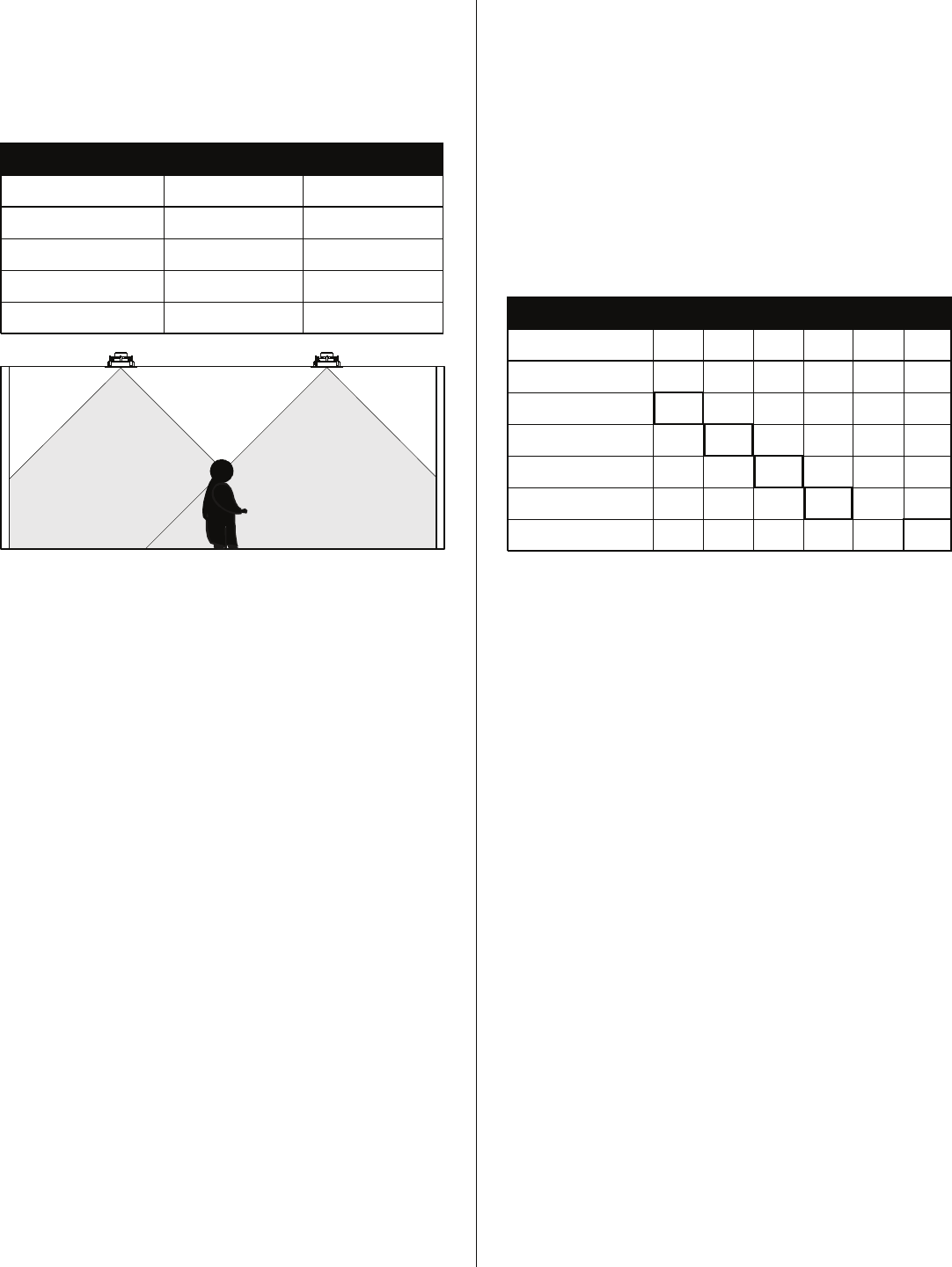
WIRE GAUGE — 8 OHM SYSTEM
When using the CM860 and CM660 in an 8 ohm system the total wire
resistance should be less than 10% of the speaker impedance. The
CM860 and CM660 nominally 8 ohms impedance, so your total wire
resistance should be no more than 0.8 ohms.
In simple terms, the extra resistance from the wire will have a very
negative affect on the sound quality of the speaker. The sound can be
less dynamic, definition of bass frequencies can be reduced, and in
extreme cases, the high frequencies can be attenuated. Amplifier
power is also wasted in the wire, reducing the maximum output level
of the system.
Please refer to the following chart when deciding on the appropriate
wire gauge for your installation.
Wire resistance in Ohms vs. length of cable run
Distance in Feet
50' 100' 150' 200' 250' 300'
.86
.65
.43
.27
.17
.11
18 gauge
16 gauge
14 gauge
12 gauge
10 gauge
20 gauge
1.73
1.30
.85
.54
.34
.22
2.59
1.94
1.28
.81
.51
.33
3.45
2.59
1.71
1.08
.68
.44
4.32
3.24
2.14
1.35
.85
.56
5.18
3.89
2.56
1.62
1.02
.67
3
DISTRIBUTED AUDIO PLACEMENT
The Sound Advance Prommercial series speakers possess extremely
smooth and predictable off-axis frequency response. The chart below
shows how far apart the speakers can be placed in a distributed audio
system. The calculations are based on +/- 45 degrees of coverage
from the speaker, and listener ear heights of 62" for standing and 40"
for seated.
Distributed Audio Placement
Speaker spacing in feet for a distributed audio system
Standing Listener Seated Listener
10 foot ceiling
12 foot ceiling
14 foot ceiling
8 foot ceiling
9.5'
13.5'
17.5'
21.5'
5.7'
9.7'
13.7'
17.7'
When choosing an amplifier the maximum number of speakers and the
output level of each speaker must be known. The sum of the tap
settings should never exceed 80% of the amplifier’s rated output. For
example, if there are 5 speakers and the taps are set at 15 watts, the
load would be 75 watts (5 x 15 watts = 75 watts). To arrive at the
needed power for this number of speakers, simply divide the total load
by .8. In this case, 75 / .8 = 93.75 watts. Therefore, a standard 100
watt amp would safely drive this load. To calculate the amount of
usable power an amp offers, simply multiply the rated output by .8,
i.e., 100 watts x .8= 80 watts.
AMPLIFIER SELECTION
The most common wire used on commercial 70 volt systems is 18
gauge, 2 conductor, stranded, and jacketed without a shield.
The wire starts at the amplifier location and is paralleled at each
speaker location.
Wire length using 18 gauge is appropriate up to 700 feet with a 100-
watt load. If you double the load (sum of your tap settings), you will
reduce the footage by half, to 350 feet. Conversely, if you halve the
load, you may double the acceptable wire length, i.e., a 50 watt load is
safe over 1400 feet of 18 gauge. Stepping up to 16 gauge wire
extends the allowable run length by approximately 35%. For example,
a 100-watt load can go 700 feet on 18 gauge; the same load may be
placed on 1100 feet of 16 gauge.
WIRE GAUGE — 70/100 VOLT SYSTEM
PAINTING THE SPEAKERS AND GRILLES
The Sound Advance CM860 and CM660 speakers feature a tough
weather-resistant ABS finish that may be painted to color match their
surroundings. Use a weather-resistant outdoor paint and a spray gun.
First remove the grille by carefully prying it away from the baffle. The
driver components must be protected from paint when spraying. If
necessary, you can fashion plugs by placing the speaker grille on a
piece of cardboard and tracing around the outside of the grille. Cut
just inside the line you drew on the cardboard and place the paint plug
on the speaker baffle. Remove the paint plug when you are finished
painting.
The metal grilles may also be painted. Use very thin paint (5:1). It will
be easier to paint the grille while it is off the speaker. Avoid plugging
up the holes with excess paint.
No maintenance is required when installed in accordance with
installation and wiring guidelines described in this manual.
MAINTENANCE



